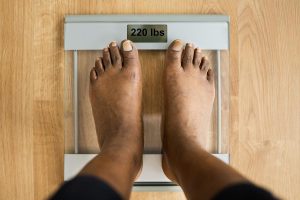Hopping backward is a good test to see if someone’s ACL surgery has gone well, a new study says.
That backward hop is an effective way of measuring the strength of a patient’s knee function, as well as the strength of their quadriceps, researchers reported recently in the Journal of Sport and Health Science.
And all it takes is a tape measure.
“The goal is to help practitioners have an easy way to measure where people are after an ACL injury and during recovery,” said lead researcher Yu Song, an assistant professor of health, sport & exercise sciences at the University of Kansas.
About 120,000 anterior cruciate ligament (ACL) injuries occur each year in the United States, researchers said in background notes. This ligament helps keep the knee stable, but it can be torn through heavy bending or twisting.
About one-third of young, active people re-injure their ACL after returning to play following knee surgery, researchers noted. In fact, ACL re-injuries are 15 times more common than initial ACL tears.
As a result, it’s crucial to make sure someone is fully recovered before clearing them for exercise and competition, researchers said.
Hopping forward is currently a common means of measuring recovery from knee surgery, but “studies reported that the forward hopping distance masked the real knee recovery status,” Song said in a university news release. “We want to be able to evaluate more closely with more exact measures.”
For this study, researchers asked 34 people who’d not suffered an ACL injury to hop backward, so their knee function and quad strength could be measured. They also hopped forward and straight up.
To simulate an ACL injury, these participants also performed single-leg hops after their quad muscles had become fatigued, researchers said.
Results showed that all three exercises tested the knee, which suffered a decrease in function after the leg became fatigued.
However, backward hopping was the most strenuous test, with fatigued participants only able to hop at about 84% of their normal force and distance, researchers said.
But participants were able to perform at more than 90% of their pre-fatigue measures when hopping forward or upward.
“The knee contribution is very small, especially compared to the hip, in forward hops,” Song said. “That is not the case in backward hopping, the knee work is significantly greater [two times] in that motion.”
Single leg backward hopping recorded the greatest peak knee torque, peak knee power and knee work, compared to forward and vertical hopping, researchers said.
That indicates that it could likely be at least an equal, if not superior, method of measuring recovery from ACL surgery, Song said.
“People may not think of knee function or hopping backward as a natural part of movement, but people do use backward direction, such as walking backwards, regularly in rehab,” Song said. “Single-leg hopping is something we want to better understand and have found it can significantly and accurately tell us about knee strength.”
More information
The Cleveland Clinic has more about ACL surgery.
SOURCE: University of Kansas, news release, Sept. 16, 2024
Source: HealthDay
Copyright © 2026 HealthDay. All rights reserved.












-300x200.jpeg)




